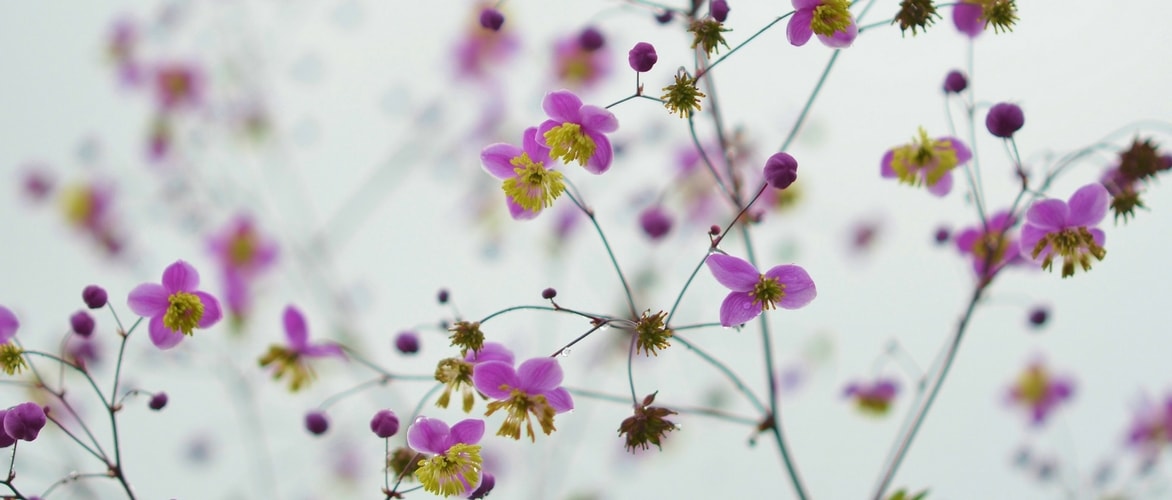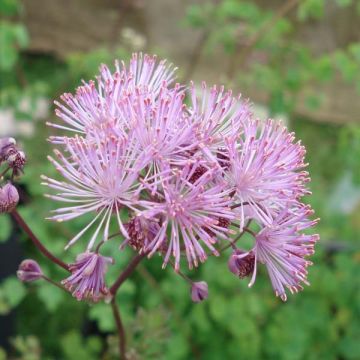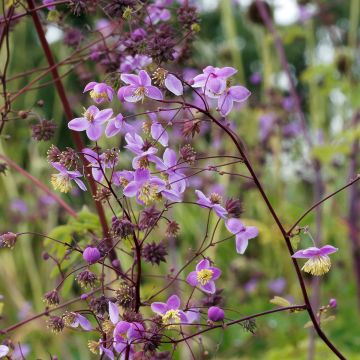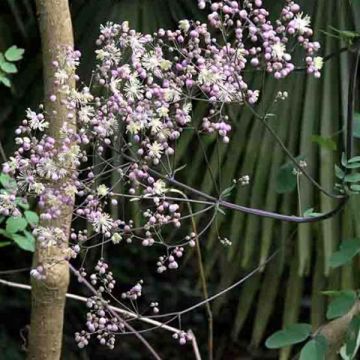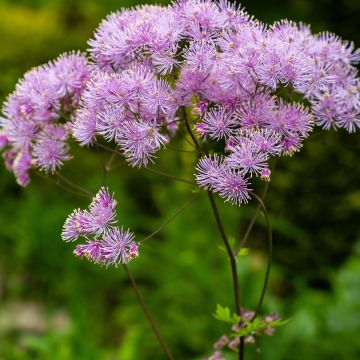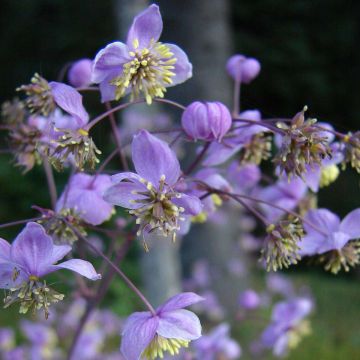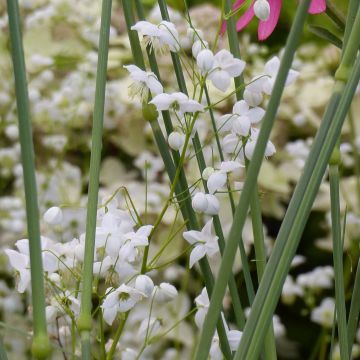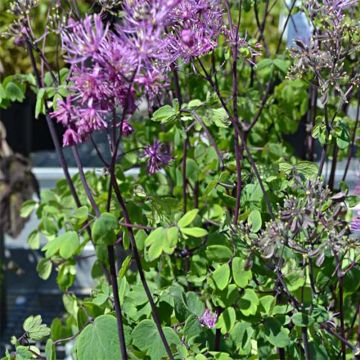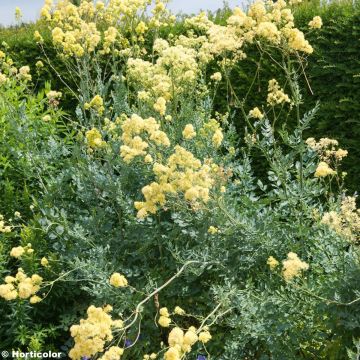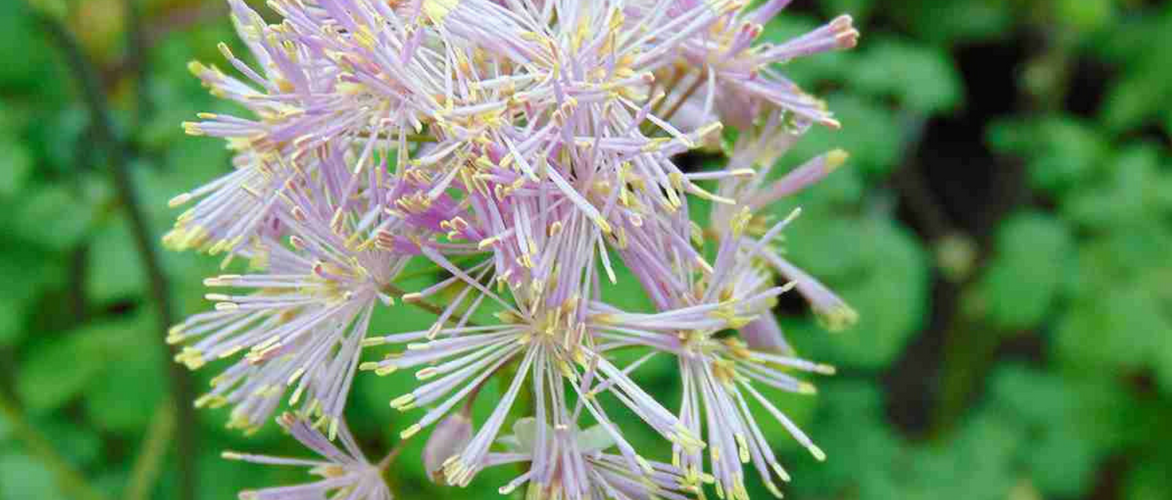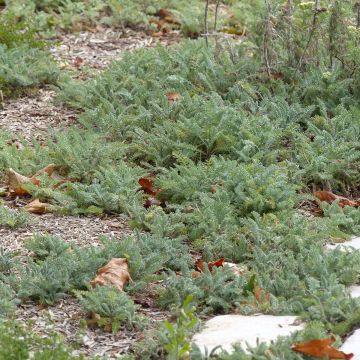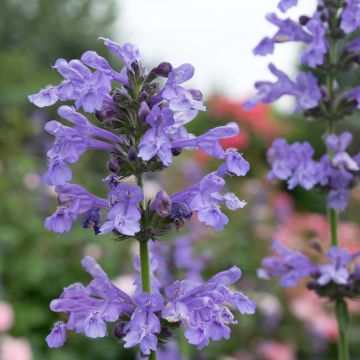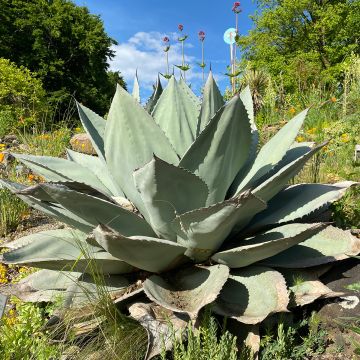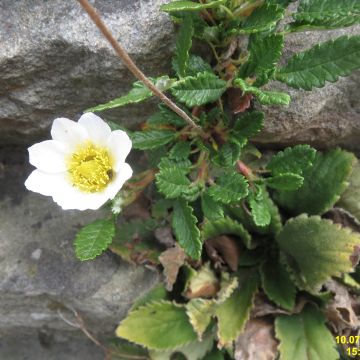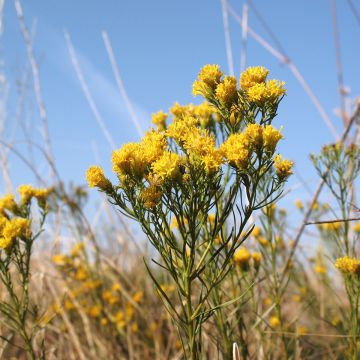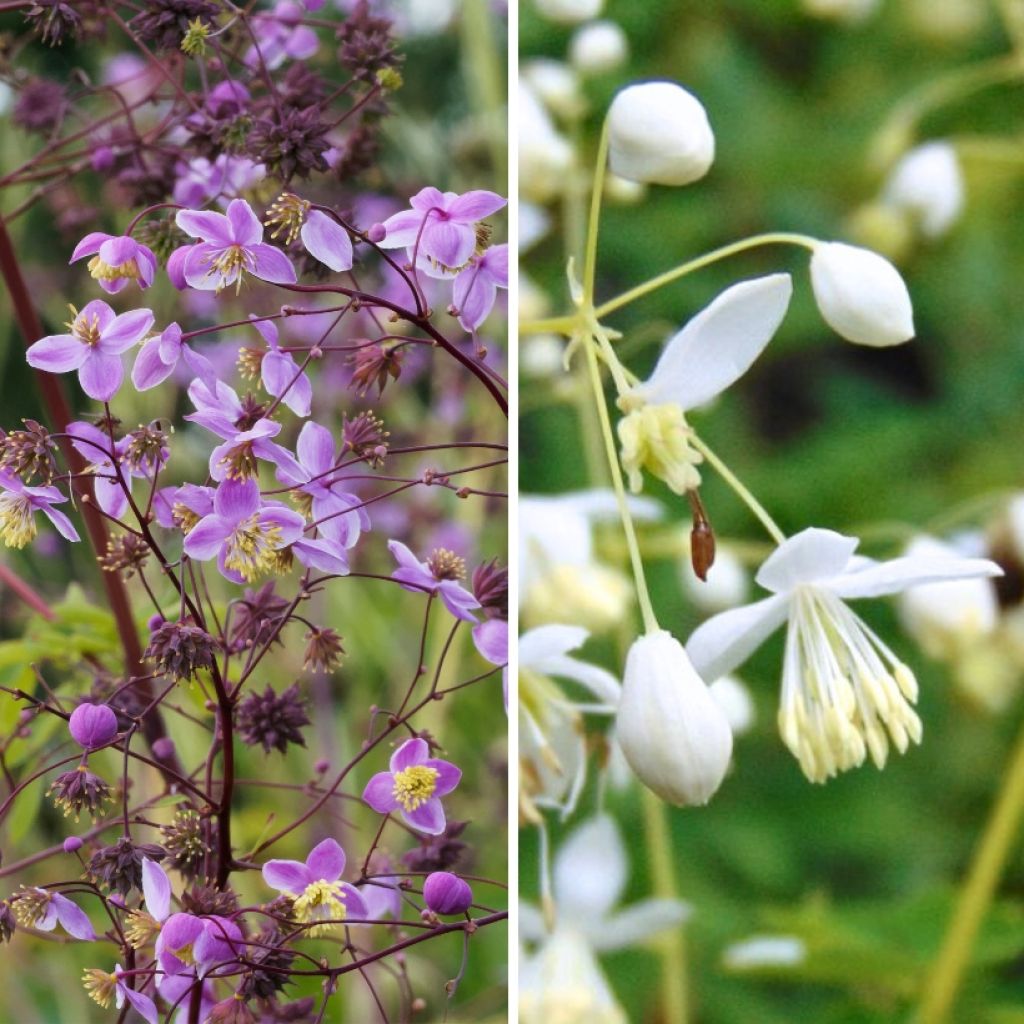

A pair of Thalictrum delavayi
A pair of Thalictrum delavayi
Thalictrum delavayi sp., Alba
Chinese Meadow Rue
2 plants ordered, arrived perfectly packaged, one is nice and green and vigorous, the other seems to be already entering its vegetative phase, but they are two different varieties, so I'm not too worried about it, as they will completely disappear with winter. They have been in the ground for 1 week in a 14m² bed with silver candles, anemones, and peach-flowered campanulate flowers, we will see the result next year when vegetation resumes. Can't wait!!!!
Johanna, 22/10/2024
Special offer!
Receive a €20 voucher for any order over €90 (excluding delivery costs, credit notes, and plastic-free options)!
1- Add your favorite plants to your cart.
2- Once you have reached €90, confirm your order (you can even choose the delivery date!).
3- As soon as your order is shipped, you will receive an email containing your voucher code, valid for 3 months (90 days).
Your voucher is unique and can only be used once, for any order with a minimum value of €20, excluding delivery costs.
Can be combined with other current offers, non-divisible and non-refundable.
Home or relay delivery (depending on size and destination)
Schedule delivery date,
and select date in basket
This plant carries a 12 months recovery warranty
More information
We guarantee the quality of our plants for a full growing cycle, and will replace at our expense any plant that fails to recover under normal climatic and planting conditions.
Would this plant suit my garden?
Set up your Plantfit profile →
Collection items (2 plants)
Description
This pair of tall Thalictrums with single flowers, also known as meadow rues, brings together Thalictrum delavayi and Thalictrum delavayi 'Album'. These are perennial plants that bring a touch of elegance to the garden with their airy and cloudy summer flowering. Their deciduous, green leaves resemble those of columbines. They provide an interesting texture in perennial borders. These varieties are hardy down to -15°C and will tolerate slightly chalky soils. The ideal soil for successful cultivation of these plants will be humus-bearing, rich, moist, and well-drained.
The pair consists of:
1 x Thalictrum delavayi: the species with clusters of mauve flowers which can reach a height of 1.70 m, or even up to 2 m in very favorable conditions. Its foliage is light green and finely cut. Flowering occurs between late June and August.
1 x Thalictrum delavayi 'Album': unlike the species, this variety has white flowers and a slightly more modest growth, usually not exceeding 1.5 m high. The foliage is similar to the previous one, in terms of texture and colour.
This pair of meadow rues should be planted in spring or autumn in humus-bearing, rich, and well-drained soil. They prefer a semi-shaded position but can tolerate sun if the soil remains moist in summer. In a border, place the taller variety, Thalictrum delavayi, behind the shorter Thalictrum delavayi 'Album'. Allow for 3 to 4 plants per square metre and maintain a distance of at least 60 centimetres between each plant.
This pair of Thalictrum delavayi are perfect with hostas, especially the variety 'Halcyon', whose ample blue-green foliage contrasts with the delicate foliage of its companions. 'Fanal' astilbes, with their red flowers, can be positioned in front of the Thalictrums to add an extra touch of colour. Finally, for an even more ethereal effect, add a few plants of ferns such as Dryopteris erythrosora, with its coppery pink fronds among the other perennials.
Flowering
Foliage
Plant habit
Botanical data
Thalictrum
delavayi
sp., Alba
Ranunculaceae
Chinese Meadow Rue
Thalictrum dipterocarpum HORT., Thalictrum dipterocarpum
Cultivar or hybrid
Other Thalictrum - Meadow Rue
View all →Planting and care
Despite its delicate and fragile appearance, Thalictrum delavayi is very hardy and low-maintenance. It simply needs to be planted in partial shade or even full shade, in a moist to wet soil that is rich in organic matter and well-drained, without too much limestone. It can be planted in full sun, as long as the soil does not dry out too much and there is ambient humidity around the plant. Plant in spring or autumn, the base of a north or east-facing wall would be ideal. Add compost to the soil every year to improve drainage in winter and facilitate root development. Also, remember to water regularly during dry and hot periods. Regularly remove faded flowers to prolong flowering. It loses its leaves in autumn and completely disappears in winter, it will only reappear quite late in spring. Therefore, it is advisable not to cut the plant down to the ground in autumn, to remember its location the following spring. As it can grow quite large, staking may be necessary, especially if this Meadow Rue is used as a standalone plant or in a windy location. To avoid this, it is a good idea to plant it amid other plants and bushes for support. Dividing the clumps can be done in March-April by cutting the clump into several pieces with a spade, but the divisions take a long time to establish. While highly resistant to diseases, it may still be susceptible to powdery mildew during dry spells and slug attacks at the start of the growing season.
Planting period
Intended location
Care
Planting & care advice
-
, onOrder confirmed
Reply from on Promesse de fleurs
Similar products
Haven't found what you were looking for?
Hardiness is the lowest winter temperature a plant can endure without suffering serious damage or even dying. However, hardiness is affected by location (a sheltered area, such as a patio), protection (winter cover) and soil type (hardiness is improved by well-drained soil).

Photo Sharing Terms & Conditions
In order to encourage gardeners to interact and share their experiences, Promesse de fleurs offers various media enabling content to be uploaded onto its Site - in particular via the ‘Photo sharing’ module.
The User agrees to refrain from:
- Posting any content that is illegal, prejudicial, insulting, racist, inciteful to hatred, revisionist, contrary to public decency, that infringes on privacy or on the privacy rights of third parties, in particular the publicity rights of persons and goods, intellectual property rights, or the right to privacy.
- Submitting content on behalf of a third party;
- Impersonate the identity of a third party and/or publish any personal information about a third party;
In general, the User undertakes to refrain from any unethical behaviour.
All Content (in particular text, comments, files, images, photos, videos, creative works, etc.), which may be subject to property or intellectual property rights, image or other private rights, shall remain the property of the User, subject to the limited rights granted by the terms of the licence granted by Promesse de fleurs as stated below. Users are at liberty to publish or not to publish such Content on the Site, notably via the ‘Photo Sharing’ facility, and accept that this Content shall be made public and freely accessible, notably on the Internet.
Users further acknowledge, undertake to have ,and guarantee that they hold all necessary rights and permissions to publish such material on the Site, in particular with regard to the legislation in force pertaining to any privacy, property, intellectual property, image, or contractual rights, or rights of any other nature. By publishing such Content on the Site, Users acknowledge accepting full liability as publishers of the Content within the meaning of the law, and grant Promesse de fleurs, free of charge, an inclusive, worldwide licence for the said Content for the entire duration of its publication, including all reproduction, representation, up/downloading, displaying, performing, transmission, and storage rights.
Users also grant permission for their name to be linked to the Content and accept that this link may not always be made available.
By engaging in posting material, Users consent to their Content becoming automatically accessible on the Internet, in particular on other sites and/or blogs and/or web pages of the Promesse de fleurs site, including in particular social pages and the Promesse de fleurs catalogue.
Users may secure the removal of entrusted content free of charge by issuing a simple request via our contact form.
The flowering period indicated on our website applies to countries and regions located in USDA zone 8 (France, the United Kingdom, Ireland, the Netherlands, etc.)
It will vary according to where you live:
- In zones 9 to 10 (Italy, Spain, Greece, etc.), flowering will occur about 2 to 4 weeks earlier.
- In zones 6 to 7 (Germany, Poland, Slovenia, and lower mountainous regions), flowering will be delayed by 2 to 3 weeks.
- In zone 5 (Central Europe, Scandinavia), blooming will be delayed by 3 to 5 weeks.
In temperate climates, pruning of spring-flowering shrubs (forsythia, spireas, etc.) should be done just after flowering.
Pruning of summer-flowering shrubs (Indian Lilac, Perovskia, etc.) can be done in winter or spring.
In cold regions as well as with frost-sensitive plants, avoid pruning too early when severe frosts may still occur.
The planting period indicated on our website applies to countries and regions located in USDA zone 8 (France, United Kingdom, Ireland, Netherlands).
It will vary according to where you live:
- In Mediterranean zones (Marseille, Madrid, Milan, etc.), autumn and winter are the best planting periods.
- In continental zones (Strasbourg, Munich, Vienna, etc.), delay planting by 2 to 3 weeks in spring and bring it forward by 2 to 4 weeks in autumn.
- In mountainous regions (the Alps, Pyrenees, Carpathians, etc.), it is best to plant in late spring (May-June) or late summer (August-September).
The harvesting period indicated on our website applies to countries and regions in USDA zone 8 (France, England, Ireland, the Netherlands).
In colder areas (Scandinavia, Poland, Austria...) fruit and vegetable harvests are likely to be delayed by 3-4 weeks.
In warmer areas (Italy, Spain, Greece, etc.), harvesting will probably take place earlier, depending on weather conditions.
The sowing periods indicated on our website apply to countries and regions within USDA Zone 8 (France, UK, Ireland, Netherlands).
In colder areas (Scandinavia, Poland, Austria...), delay any outdoor sowing by 3-4 weeks, or sow under glass.
In warmer climes (Italy, Spain, Greece, etc.), bring outdoor sowing forward by a few weeks.
































